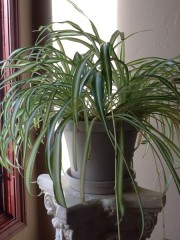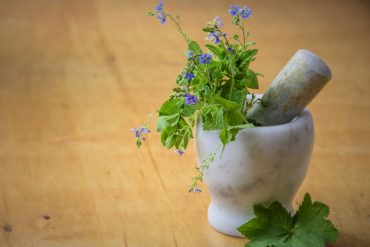With newer homes and building being designed for improved energy efficiency, the result is a double edged sword. It is wonderful to have lower heating bills and a higher level of energy efficiency, but without clean air and proper air circulation we are trapping pollutants in our homes and reducing the air quality. In addition the synthetic materials used in modern construction, as well as cleaning products, have produced pollutants that remain trapped in unventilated buildings. Many of you may be familiar with the term Sick Building Syndrome, which results when pollutants are trapped in your home or office, as a result of air tight construction. Many homes, commercial and medical facilities are so air tight, that they are virtually sealed off from the outside environment and without proper air circulation, many problems are created.
In the late 1980’s studies done by NASA and the ALCA (Associated Landscape Contractors of America) were looking for ways to purify the air for extended stays in orbiting space stations. The study conducted by Dr. B.C. Wolverton, Anne Johnson and Keith Bounds in 1989 came up with amazing results that would benefit the inhabitants of space stations, and those of us who are earth bound as well. The results are as relevant now, as they were in 1989, perhaps even more so.
It is a well known fact that plants convert carbon dioxide into oxygen through photosynthesis, the NASA/ALCA study showed that houseplants do so much more, such as removing harmful chemicals such as benzene, formaldehyde and trichloroethylene from the air.
Where would you find benzene, formaldehyde and trichloroethylene in your home?
Benzene is found in tobacco smoke, synthetic fibers, inks, oils, plastics and detergents.
Formaldehyde is found in foam insulation, plywood, particle board, floor coverings, carpet backing, adhesives, tobacco smoke and many cleaning and personal products.
Trichloroethylene is found in ink, paints, dry cleaned clothes, varnishes and lacquers.
Houseplants act as natural air filters that remove pollutants from the indoor air in a variety of ways. The soil and leaves release large amounts of water vapor that help to humidify the air. Plants also give off phytochemicals that help to suppress mold spores and bacteria in the air. The real “wow factor” of plants is their ability to remove chemicals from the indoor air. So how exactly do plants perform this feat? Plants absorb chemicals through openings in their leaves called stomata. Once the chemical or pollutant has been absorbed the plant either breaks it down or sends it to the root system where it is released as food to the root system. Chemicals are also removed from the air and sent to the root system by transpiration. In this method the water vapor that plants emits through the leaves rises from the plant and into the air. This creates air circulation that moves in the opposite direction toward the base of the plant drawing chemicals into the soil where they are rendered harmless.
All of these plants are wonderful air cleaners; the ones with exceptional ability are noted with additional information.
1. Boston Fern
2. Areca Palm
3. Lady Palm
4. Bamboo Palm- removes formaldehyde, benzene and trichloroethylene.
5. Rubber Plant- removes formaldehyde
6. Dracaena Janet Craig
7. English Ivy- removes formaldehyde
8. Dwarf date palm-removes xylene
9. Ficus alii
10. Peace lily-removes alcohols, acetone, formaldehyde, benzene and trichloroethylene
11. Corn plant- removes formaldehyde
12. Golden pothos
13. Kimberly queen fern- removes formaldehyde, alcohols
14. Florists mum- removes formaldehyde, benzene, and amonia
15. Gerber daisy
16. Dracaena warneckei-removes benzene
17. Dragon tree-removes xylene and trichloroethylene
18. Schefflera
19. Spider plant- removes formaldehyde
20. Weeping fig- removes formaldehyde
References:
How to grow fresh air: 50 houseplants that purify your home or office by B. C. Wolverton
PDF files of the NASA studies related to plants and air quality:http://ntrs.nasa.gov/archive/nasa/ssctrs.ssc.nasa.gov/foliage_air/foliage_air.pdf
http://ntrs.nasa.gov/archive/nasa/ssctrs.ssc.nasa.gov/journal_mas/journal_mas.pdf
List of NASA studies related to treating a variety of air and waterborne pollutants with plants:
http://www.ssc.nasa.gov/environmental/docforms/water_researchwater_research.html







